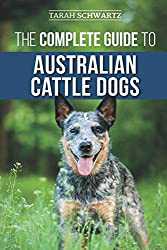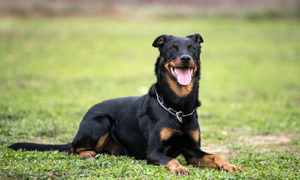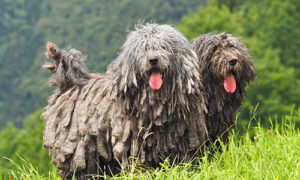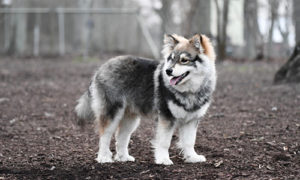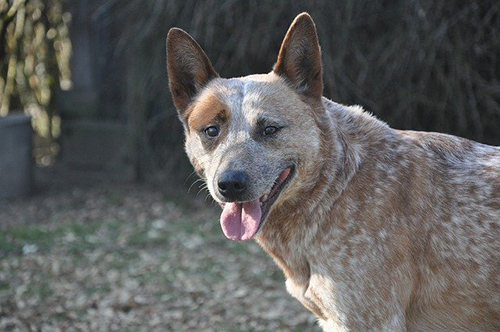
The Australian Cattle Dog has an exciting story to tell. For instance, after Europeans arrived in Australia, sheep and cattle became a mainstay of the economy. Smithfield Collies imported from Britain proved unsuitable for the task at hand, as they lacked stamina and weather resistance and barked excessively.
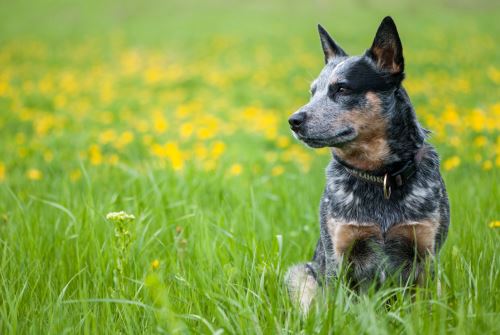
Therefore, cattle ranchers brought in Smooth Merle Collies from Scotland in 1840 and crossed them with Dingoes, which produced a regional breed. Later, they combined these crosses with Dalmations and black and tan Kelpies.
The blues became the more popular of the two colors, so they named the breed the Blue Heeler, which they still use today. This dog is a sturdy, compact breed with the stamina to work all day in the harsh conditions of Australia’s vast ranches.
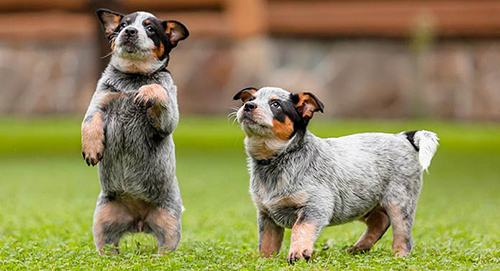
The body is rectangular, well-proportioned, and muscular with sturdy, round bone and a deep chest. The long, low-set tail is carried low or level with the back. The hard, weather-resistant coat is red or blue with distinctive markings. The skull is broad with muscular cheeks, a broad foreface, a medium-length muzzle, and a black nose. The eyes are oval, and the erect ears are wide-set on the skull, moderately pointed, and very sensitive.
Australian Cattle Dog Breed Facts
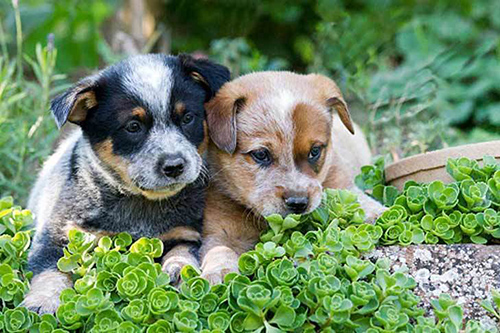
Activity level: The Australian Cattle Dog is a high energy working dog that needs plenty of exercise and mental challenges. Also, it excels in many types of dog sports.
- POPULARITY: Somewhat popular
- FAMILY: Livestock, Herding
- AREA OF ORIGIN: Australia
- DATE OF ORIGIN: 1800s
- ORIGINAL FUNCTION: Cattle herding
- TODAY’S FUNCTION: Cattle herding, herding trials, companion
- OTHER NAME: Queensland heeler, Blue Heeler, Hall’s Heeler
Temperament
This dog is alert, vigilant, and courageous. Ranchers bred these dogs to work. Therefore, they must have a job to satisfy their need for mental and physical activity. Activities can range from herding livestock to chasing a Frisbee. They’re lovely family companions as long as owners are committed to training and socialization; otherwise, the breed’s strong instincts can lead to problems such as herding children or other pets, nipping at heels, or barking excessively.
Australian Cattle Dog Grooming
We recommend weekly brushings and occasional bathing to keep the dog neat and clean, with more frequent brushing during spring and fall shedding.
Coat: This breed has a short, harsh, weather-resistant double coat. The outer layer is short, hard, and close. However, the undercoat is dense.
Color: Australian Cattle Dog’s come in blue, mottled, or blue speckled and may have black, blue, or tan markings. Reds are speckled all over and may have darker red markings on the head.
Australian Cattle Dog Health Issues
- Major concerns: CHD, OCD, deafness, PRA, elbow dysplasia
- Minor concerns: none
- Occasionally seen: cataract, lens luxation, PPM, vWD
- Suggested tests: hip, hearing, eye, elbow, DNA for PRA, DNA for lens luxation
- Life span: 10-13 years
- Weight: 35-45 pounds
- Height: male: 18-20 inches; female: 17-19 inches
Australian Cattle Dog Buyer’s Guide and Breeder Advice
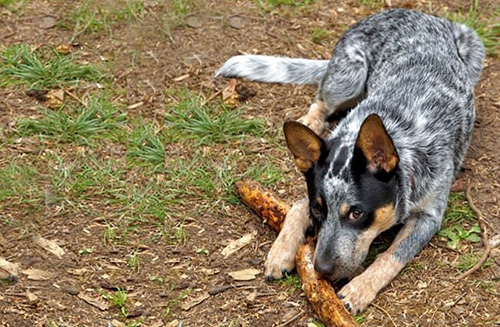
Join a breeder-related email list to learn about training and care before acquiring an Australian Cattle Dog. Choose a puppy that has been with his dam and littermates for at least eight weeks, learning bite inhibition. Owners must continue this training to discourage inappropriate nipping and, more importantly, be willing to take the role of benevolent pack leader.
Parent club: Australian Cattle Dog Club of America; founded in 1968
Regional clubs: You can find more information on the parent club’s website.
Rescue: Australian Cattle Dog Rescue, Inc.
Year of AKC recognition: 1980

